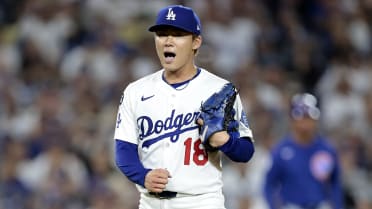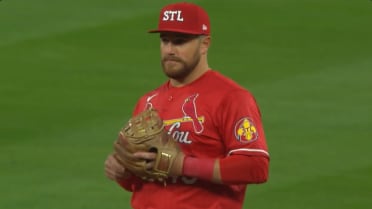Harrison Bader wasn't one of the three finalists for the National League Gold Glove in center field, won for the third straight year by Ender Inciarte. He didn't take the Wilson Defensive Player of the Year Award in center either, somehow won by Kevin Kiermaier despite playing only 88 games in the outfield, 30 fewer than Bader did.
On some level, this is understandable, because Bader began the year as a fourth outfielder behind Marcell Ozuna, Tommy Pham and William Fowler, not ascending to an everyday role until early August. But by nearly every defensive metric we can think of, Bader was the best defensive outfielder in the game on a per-play basis in 2018 -- and he surely passed the eye test as well.
So since Bader isn't going to come away from his rookie season with any hardware, let's do it for him. He was the most impressive outfielder we saw all year, and if any player was snubbed in the postseason award balloting, it was him.
We investigated this back in August, not long after Bader was installed as the Cardinals' everyday center fielder. He then started all but four games in center over the final two months, so let's update the numbers to show just how strong of a fielding season he ended up having.
No outfielder saved more outs in 2018
Our preferred measure of outfield range is Outs Above Average, a cumulative metric that takes the difficulty and probability of each individual outfield opportunity being made and aggregates it into a season-long total. In 2017, for example, the range went from +29 OAA (Byron Buxton) to negative-18 OAA (Matt Kemp).
In 2018, there was a tie atop the leaderboard. Sure, Inciarte is fantastic and deserves all of the accolades he receives. But he didn't finish by himself at number one. He was tied with Bader.
Most Outs Above Average in 2018
+21 -- Bader, Cardinals
+21 -- Inciarte, Braves
+19 -- Lorenzo Cain, Brewers
+17 -- Adam Engel, White Sox
+16 -- Billy Hamilton, Reds
It's not just Statcast™, either. If you're more comfortable with Defensive Runs Saved, Bader's +19 was fourth-best among outfielders. If you like Ultimate Zone Rating, Bader's +10.7 was also fourth best.
That's all very impressive, and the conversation could easily be ended right there. But there's something else we need to take into account here: playing time. All of those metrics mentioned above are counting stats, meaning that you need opportunities to accumulate them. Bader's 915 outfield innings were 56th most in the Major Leagues; he played 426 fewer innings than Inciarte did, for example.
If Bader tied Inciarte in Outs Above Average despite not playing nearly as many innings, that must mean that he was doing more with the opportunities he was given. As it turns out, he was.
Bader added more value than any other qualified outfielder
In order to see how an outfielder did on a rate basis, independent of playing time, we ask a much simpler question: How much value did they add compared to how much an an average outfielder would have added?
We can do it that way, too. Based on the difficulty of the opportunities Bader received, an average outfielder would have made the catch 85 percent of the time. But in reality, he converted 93 percent of those chances, meaning that he added +8 percentage points of value over an average outfielder.
That's a big gap. It's the largest of any qualified outfielder, by a large gap.
Most Catch Percentage Added in 2018
+8 -- Bader, Cardinals (85 percent expected, 93 actual)
+5 -- Hamilton, Reds (85, 90)
+5 -- Engel, White Sox (87, 92)
+5 -- Inciarte, Braves (88, 93)
It's many of the same names, of course, but that's to be expected. (For comparison, Kiermaier, who compiled +7 OAA when he was healthy, added three points of value by catching 93 percent of the balls hit his way when an average outfielder would have converted 90 percent.)
Now, it's important to remember what these numbers are expressing. They're entirely about range and plays made, and they do not include arm strength. We point that out because it's possible that this actually hurts Bader, who also showed off a cannon. Of the 25 hardest throws tracked by Cardinals fielders this year, 17 of them were from Bader, topping out at 99.2 mph when he just barely missed throwing out Ryan Zimmerman at the plate on a sacrifice fly on Sept. 5.
Through July 31, Bader started just 14 of the 107 games for St. Louis in center field. Pham started nearly all of the others, with spot appearances from Tyler O'Neill and Yairo Munoz. From August 1 on, with Pham traded to Tampa Bay, Bader started 51 of the remaining 55 games in center.
"What you need to be asking is, 'When did everybody else learn that I was fast?'" said Bader to MLB.com's Joe Trezza in June. "I've been fast for a really long time. These new metrics are helping everyone see that."
Bader is not wrong. His rookie year was a tremendous success, as he proved that he's immediately in the conversation for the best outfield defender in baseball. In 2018, Bader might have actually been that player, awards or not. Given a full season of play in 2019, we might be having a very different conversation at this time next year.



